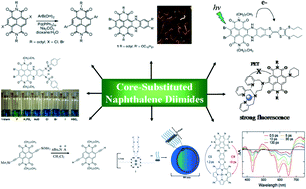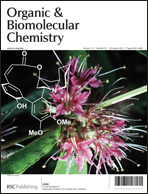Recent progress of core-substituted naphthalenediimides: highlights from 2010
Abstract
Core-substituted naphthalenediimides (cNDIs) are rapidly emerging as a powerful strategy to create functional nanomaterials and their implications in biological and supramolecular chemistry are significant. Recent developments in the synthesis of cNDIs have allowed several groups to probe the function of this interesting class of dye molecules in a molecular and supramolecular sense. Core-substitution of the NDI can be seen as an opportunity to extend the planar, rigid core and could be used to prepare novel structures for applications in organic, biosupramolecular chemistry, biomedicine, materials science and organic solar cells. In this Emerging Area, we provide up-to-date recent progress in the field of cNDIs. We begin with a general discussion and the applications of cNDIs in the field of supramolecular chemistry i.e. generation of nanostructures such as vesicles and nanotubes etc., and we also discuss advances in artificial photosynthesis. Following this is a section on their implications in the field of sensors, particularly DNA intercalation, anion sensing and NDI based pH sensors. Finally, we explore the recent development of cNDIs in organic solar cell applications. We conclude with our views on the prospects of cNDIs in future research.


 Please wait while we load your content...
Please wait while we load your content...